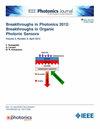电压耳--逆变器功率不足的光伏系统中的异常现象
IF 2.1
4区 工程技术
Q3 ENGINEERING, ELECTRICAL & ELECTRONIC
引用次数: 0
摘要
本研究介绍了光伏现场安装中的一种现象,我们称之为 "电压耳"。光伏装置在特定条件下会出现电压耳现象,即组件产生的功率超过逆变器所能处理的功率。当逆变器超过其功率极限时,会导致逆变器削波,太阳能模块会被调节到高于最大功率时的电压。这种电压升高会导致监测数据中出现特定的模式--电压耳。本研究分析了法国一个太阳能园区的数据。该园区的逆变器故障率很高,包括过热和起火,故障率约为 5%,最终导致逆变器全部更换。对监测数据进行自动分析后发现,在 165 万个数据点(2%)中出现了 32000 次过电压现象。使用 K-means 排序算法检测并分割了过电压现象,该算法的召回值非常高。对已识别的电压耳条件进行的分析表明,电压耳现象主要发生在辐照度高、气温低的季节。单串电压过高可达 161 V,增加了 PID 和逆变器损坏的可能性。由于偏离最大功率点而造成的直接产量损失在一月为 0.02%,六月为 0.9%。我们认为,电压耳是可能导致逆变器故障的系统设计问题的一个症状,并希望它能作为识别设计和运行问题的一个有用指标。本文章由计算机程序翻译,如有差异,请以英文原文为准。
The Voltage-Ear – An Anomaly in Photovoltaic Systems With Undersized Inverters
This study presents a phenomenon in photovoltaic field installations we call voltage ear. PV installations exhibit the voltage ear under specific conditions where modules generate more power than the inverter can handle. When inverters exceed their power limit it results in inverter clipping, and the solar modules are regulated to operate at a voltage above that at maximum power. This kind of voltage rise leads to a specific pattern in the monitoring data – the voltage ear. In the present study, data from a solar park in France was analyzed. This park featured a high rate of inverter malfunctions, including overheating and fires, resulting in an estimated 5% failure rate and, ultimately, in a complete replacement of inverters. An automated analysis of the monitoring data revealed 32.000 occurrences of excess voltage in 1.65 million data points (2%). Instances of the phenomena were detected and segmented using a K-means sorting algorithm, which yielded a perfect recall value. Analysis of the identified voltage ear conditions showed, that it occurs predominantly during seasons of high irradiance and cool temperatures. Excess voltages of up to 161 V in single strings were observed, increasing the probability for PID and inverter damage. The direct yield loss due to deviation from maximum power point was between 0.02% in January and 0.9% in June. We assume, that the voltage ear is a symptom of system design issues that can result in malfunctioning of inverters and hope that it will be useful as an indicator for identifying design and operation issues.
求助全文
通过发布文献求助,成功后即可免费获取论文全文。
去求助
来源期刊

IEEE Photonics Journal
ENGINEERING, ELECTRICAL & ELECTRONIC-OPTICS
CiteScore
4.50
自引率
8.30%
发文量
489
审稿时长
1.4 months
期刊介绍:
Breakthroughs in the generation of light and in its control and utilization have given rise to the field of Photonics, a rapidly expanding area of science and technology with major technological and economic impact. Photonics integrates quantum electronics and optics to accelerate progress in the generation of novel photon sources and in their utilization in emerging applications at the micro and nano scales spanning from the far-infrared/THz to the x-ray region of the electromagnetic spectrum. IEEE Photonics Journal is an online-only journal dedicated to the rapid disclosure of top-quality peer-reviewed research at the forefront of all areas of photonics. Contributions addressing issues ranging from fundamental understanding to emerging technologies and applications are within the scope of the Journal. The Journal includes topics in: Photon sources from far infrared to X-rays, Photonics materials and engineered photonic structures, Integrated optics and optoelectronic, Ultrafast, attosecond, high field and short wavelength photonics, Biophotonics, including DNA photonics, Nanophotonics, Magnetophotonics, Fundamentals of light propagation and interaction; nonlinear effects, Optical data storage, Fiber optics and optical communications devices, systems, and technologies, Micro Opto Electro Mechanical Systems (MOEMS), Microwave photonics, Optical Sensors.
 求助内容:
求助内容: 应助结果提醒方式:
应助结果提醒方式:


